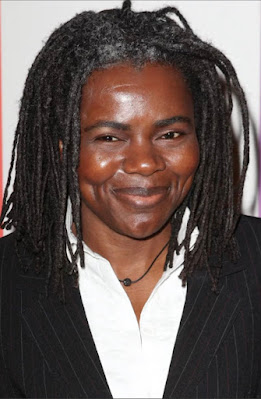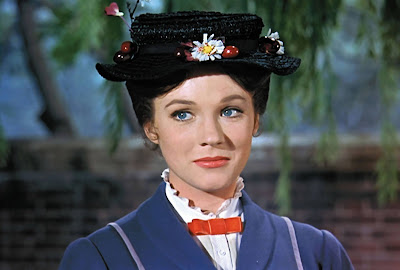October 1, 1988: "Talkin' Bout a Revolution" by Tracy Chapman entered the Billboard Hot 100 singles chart.
Chapman wrote “Talkin’ ‘Bout A Revolution,” and she released it as the second single from her 1988 self-titled debut album. The song paints a picture of discontent and hope:
 |
| Tracy Chapman |
“Poor people gonna rise up and get their share/ Poor people gonna rise up and take what’s theirs.” In the years since, bands like Living Colour and Leatherface have covered the song, and it played at Bernie Sanders campaign rallies in 2016.
Read more: Stereogum
October 1, 1935: Julie Andrews is born Julia Elizabeth Wells in Walton-on-Thames, Surrey, England.
Julie Andrews was a hit on the English stage before duplicating that success on Broadway, where she received Tony Award nominations for her roles in Camelot and My Fair Lady.
 |
| Julie Andrews as Mary Poppins |
She won an Academy Award for playing the title role in Mary Poppins and was also nominated for her performance in The Sound of Music. Andrews later worked on a number of acclaimed films with husband Blake Edwards and was made an English dame in 2000.
Read more: Biography
October 1, 1966: Los Bravos peaked at Number 4 with "Black is Black."
By the mid-’60s, rock ‘n’ roll had officially become an international phenomenon. Inspired by Anglo-American imports, countries such as France, Italy, and Germany had begun to develop their own twist on rock.
 |
| Los Bravos |
For the most part, however, the influence moved strictly in one direction: America and Britain exported rock hits to the rest of the world. Los Bravos were gifted with a number of advantages that helped them cross over: they primarily sang in English, they were signed to the Spanish arm of the UK label Decca, and they were produced by Ivor Raymonde, best known for his hits with Dusty Springfield. Most importantly, they had a terrific single: “Black is Black.”
Read more: Rebeat Magazine
October 1, 1977: James Taylor's "Your Smiling Face" enters the Top 100 music singles chart.
It finds him lighting up at the sight of a loved one. At the time, he was married to Carly Simon, the obvious inspiration. Taylor credits the piano player on the song, Clarence McDonald, for being a big part of the song's success. When Taylor ran through the song, McDonald noticed a section with no vocals, which he filled with a little riff that Taylor called "that happy Munchkin song."
Read more: Songfacts
October 1, 1983: "(She's) Sexy + 17" by The Stray Cats made it to Number 5 on Billboard.
The biggest hit from Stray Cats’ impressive 1982-1983 streak tries to merge Chuck Berry with a modern knowingness, and the result is Setzer stepping on a rake.
 |
| Stray Cats |
While Setzer’s Gretsch was born to twang through rockabilly clichés, the tension between wearing the drag of fifties tropes and the self-consciousness of writing about “rock ‘n’ roll dream[s]” makes “She’s Sexy…” a queasy listening experience, and I bet Setzer also insists on the abbreviated “‘n’.”
Read more: Humanizing the Vacuum
Talkin' Bout a Revolution
Tracy Chapman
Tracy Chapman

No comments:
Post a Comment